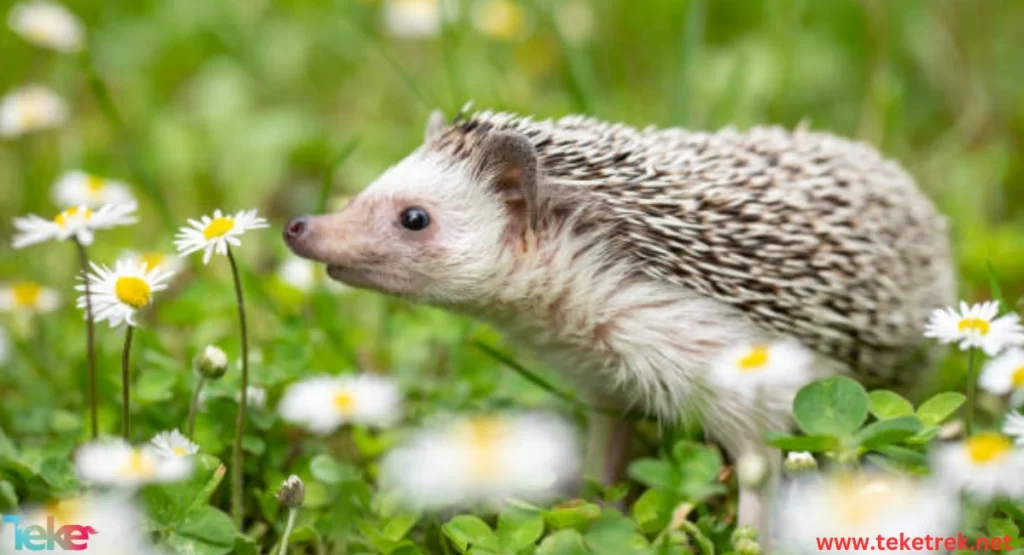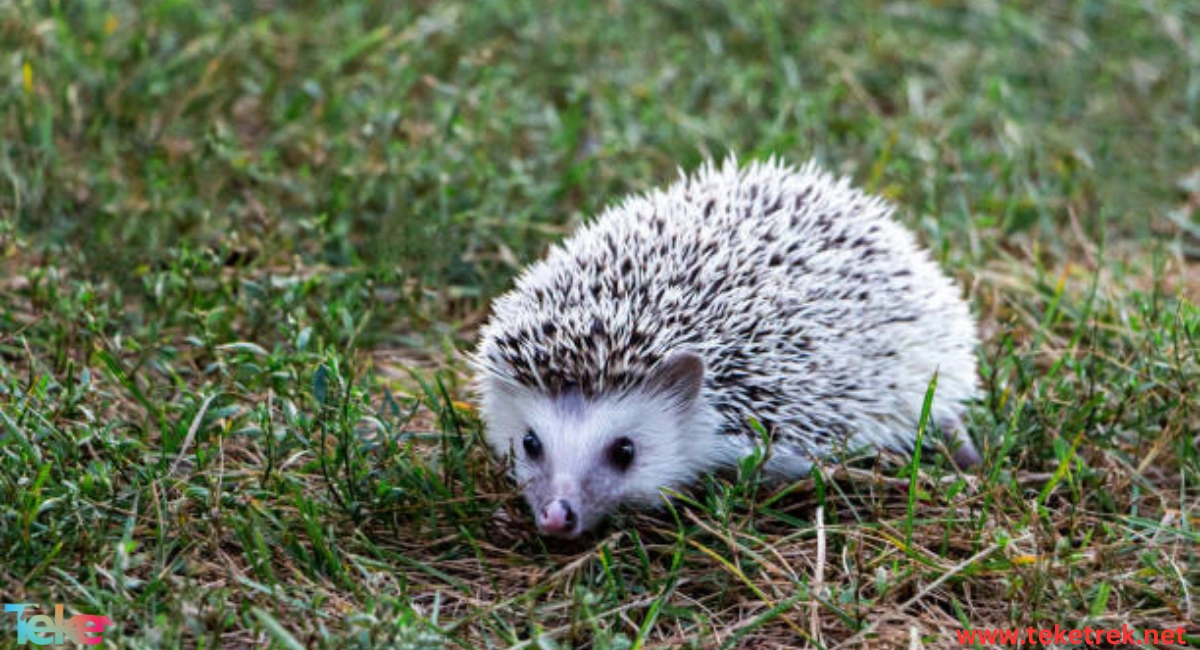The African hedgehog belongs to the class of mammals, the order of Eulipotyphla, the family of hedgehogs, the phylum of Chordates, and the subphylum of Vertebrates.
Its scientific name is Atelerix algirus.
Let’s learn more about it from teketrek.
The African hedgehog specification
The color: The African hedgehog is characterized by its pale color, the belly color ranges from brown to white, while it carries erect spines on its back, with each spine having two colors – light beige to white at the tips and dark brown in the middle.
The ears: large ears.
The legs:also has long legs that enable it to move swiftly.
The length: The average length of the African hedgehog is 19 cm, with a tail length of 2.5 cm.
The face: Its face is covered with white hair that ends in a beige color.

Facts about the African hedgehog
The African hedgehog roams an area of over 2-4 km at night to search for food. During its search, it climbs short stone walls and fences, and it can swim in water.
The African hedgehog is known for its annoying snoring sound while moving between shrubs, and it has a weak sense of sight but compensates with sharp senses of smell, touch, and hearing.
When feeling threatened, the African hedgehog raises its spines and curls into a tight ball to deter most animals.
The African hedgehog has a peculiar habit called self-anointing.
When encountering a strong smell or taste, it curls its head and uses its tongue to cover its spines and fur with frothy saliva, although the purpose of this behavior is not yet known.
The African hedgehog lacks food in winter, so it spends the coldest months of the year in hibernation inside a specially prepared nest.
The African hedgehog got its name due to its way of searching for food, and it has short limbs and a low body close to the ground.
What distinguishes it from other animals is the sharp and tough spines covering its back and sides.
In fact, the African hedgehog is useful and domesticated by some humans because it preys on many garden pests.
During hunting, it relies on its sense of hearing and smell because its vision is weak.
Where does the African hedgehog live
The North African hedgehog prefers to live in a variety of habitats, especially grasslands, meadows, agricultural fields, shrublands, as well as pastures and dry areas near the Mediterranean Sea.
The African hedgehog is also found in semi-arid regions near human settlements, gardens, and palm orchards.
They are usually found at elevations of 400 meters or less above sea level, although they can be found at elevations up to 900 meters in the Mediterranean Atlas Mountains in Morocco.
These animals have difficulty adapting to deserts and dense forests.
They are found only in these countries: Algeria, Morocco, Tunisia, Libya, Malta, Spain (eastern coasts and Balearic Islands).
What is the African hedgehog’s diet
The African hedgehog is a nocturnal animal, and one of its distinguishing behaviors is not wasting available food, especially arthropods and small vertebrates.
Its diet includes arthropods, worms, mollusks, lizards, snakes, and even some types of fungi that can be an excellent meal for it, as well as eggs, fruits, mealworms, and some other foods.
Reproduction stages of the African hedgehog
The female African hedgehog becomes ready for mating when she reaches the age of 6 months to a year, and the male can mate as soon as he reaches maturity and throughout his life, as the male African hedgehog reaches sexual maturity at the age of 4 months.
The gestation period of the female African hedgehog lasts from 30 to 46 days.
However, the average gestation period for the African hedgehog is 35 days.
Females give birth to 4 to 5 offspring in a single birth between April and September, as hedgehogs only give birth once a year, with the weight of a baby hedgehog at birth ranging between 3 to 25 g.

FAQs about the African hedgehog
- How long does the African hedgehog live?
The African hedgehog lives in the wild between 2-3 years, as a pet between 3-7 years, and can also live from 8-10 years.
- What diseases affect the African hedgehog?
Cancer, intestinal parasites, external parasites, digestive system diseases, and respiratory system diseases are some of the most common diseases affecting this animal.
- Do African hedgehogs make good pets?
African pygmy hedgehogs are not generally recommended as pets. Despite their popularity, they are wild animals and require more specialized care compared to typical domestic pets. Their nocturnal nature means they are active at night and should be left undisturbed during the day, which can make interaction with them challenging for most pet owners.
- Can African hedgehogs swim?
Contrary to the popular belief inspired by Sonic the Hedgehog, real-life hedgehogs are actually strong swimmers. African hedgehogs can paddle effectively in natural bodies of water. As nocturnal animals, they are known to run and swim up to 2 kilometers each night in search of food.
- Why do African hedgehogs have strong back muscles?
.African hedgehogs have strong back muscles that are crucial for their defense mechanism. When threatened, these muscles allow them to curl into a tight ball, causing their spines to protrude outward, deterring predators. This ability to roll up tightly is a key survival strategy. Additionally, these hedgehogs are known for their distinctive fur-covered faces and relatively long spines, which add to their defensive capabilities.
- Do hedgehogs live in Africa?
Yes, hedgehogs live in Africa.
In conclusion, African hedgehog is important to highlight the significance of this species in maintaining environmental balance.
References:





